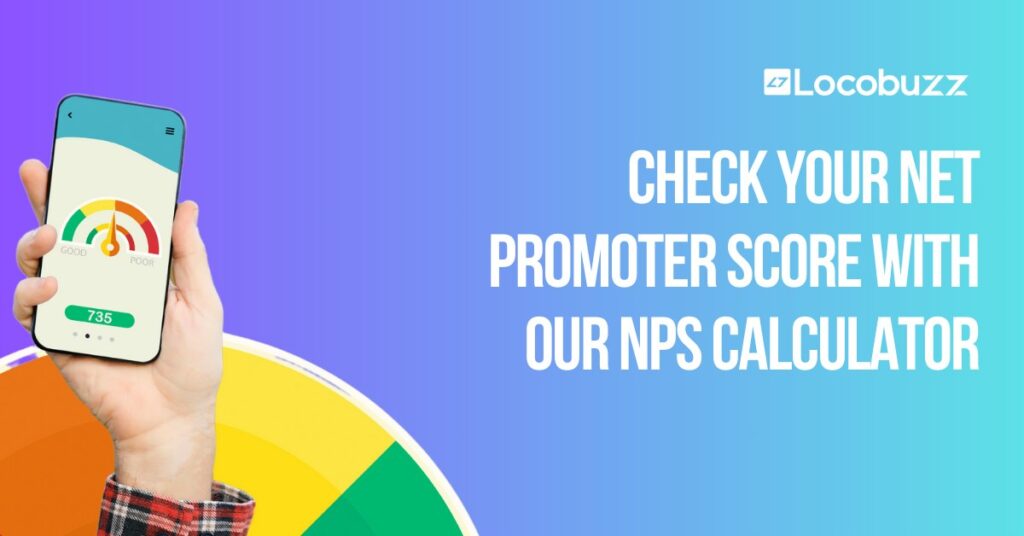Check Your Net Promoter Score with Our NPS Calculator
Calculate Your Net Promotor Score NPS Calculator Please enter the number of respondents for each rating: 0 1 2 3 4 5 6 7 8 9 10 Submit Your NPS: N/A Summary of Net Promoter Score NPS is a widely used metric in customer experience management. It is used to gauge customer loyalty, satisfaction, and enthusiasm with a company. The Net Promoter Score (NPS) is a customer satisfaction metric that measures how likely a customer is to recommend a company’s products or services to others. A high NPS score indicates that a company has a strong customer base that is likely to recommend its products or services to others. Conversely, a low NPS score indicates that a company has a weak customer base that is unlikely to recommend its products or services. The score is calculated based on the responses to a single question: “How likely is it that you would recommend our company to a friend or colleague?” To calculate the NPS, we first need to classify the responses into three categories: Promoters, Passives, and Detractors. Promoters are customers who respond with a score of 9 or 10, Passives are those who respond with a score of 7 or 8, and Detractors are those who respond with a score of 0 to 6 Once we have the number of respondents in each category, we can calculate the NPS using the following formula: How does it work? Survey Question: – Customers are asked to rate their likelihood of recommending on a scale from 0 to 10. Responses are categorized into three groups:– Promoters (score 9-10): Loyal enthusiasts who are likely to promote.– Passives (score 7-8): Satisfied but unenthusiastic customers.– Detractors (score 0-6): Unhappy customers who may spread negative feedback. Interpreting NPS Positive Score (Above 0)– Indicates a higher number of promoters, suggesting overall customer satisfaction and loyalty. Negative Score (Below 0)– Implies a higher number of detractors, signalling potential issues requiring attention. Importance of Measuring Customer Satisfaction Enhanced Customer Retention – Satisfied customers are more likely to remain loyal.– A positive experience fosters brand loyalty and repeat business. Word-of-Mouth Marketing – Happy customers become brand advocates, sharing positive experiences.– Positive word-of-mouth boosts reputation and attracts new customers. Insight into Customer Needs – Feedback from satisfaction surveys helps understand customer preferences.– Tailoring products/services to customer needs leads to increased satisfaction. Improved Product/Service Quality – Customer feedback highlights areas for improvement.– Iterative enhancements based on feedback lead to better offerings. Reduced Churn Rates – Monitoring satisfaction helps identify and address potential issues.– Proactive resolution reduces the likelihood of customer churn. Competitive Edge – Satisfied customers differentiate your brand from competitors.– Positive reviews and testimonials create a favourable market position. Employee Morale and Productivity – Satisfied customers contribute to a positive work environment.– Employees take pride in delivering quality service, boosting productivity. Data-Driven Decision Making – Customer satisfaction data guides strategic decisions.– Informed choices lead to better resource allocation and business growth. Customer-Centric Culture – Prioritizing satisfaction fosters a customer-centric organizational culture.– Every department aligns efforts towards delivering exceptional experiences. Financial Impact – Satisfied customers tend to spend more over their lifetime.– Positive customer experiences contribute to long-term revenue growth. Key Considerations Benchmarking– NPS is valuable for benchmarking against industry standards and competitors. Continuous Improvement– Regularly collecting NPS data enables businesses to identify trends and make continuous improvements. Actionable Insights– NPS not only provides a score but also prompts organizations to take specific actions based on customer feedback. Implementing NPS effectively, especially within your CX suite, can be a powerful tool for gauging customer sentiment and steering strategies for improved customer experiences. Strategies for improving low scores To improve low Net Promoter Scores (NPS), businesses should employ a multifaceted approach. Swiftly addressing customer concerns is paramount; providing personalized and timely solutions demonstrates genuine commitment. Establishing continuous feedback loops allows for ongoing insights, aiding in the identification of recurring issues. Enhancing communication channels and managing customer expectations can contribute to overall satisfaction. Investing in employee training and empowerment ensures that staff can effectively handle customer concerns, fostering positive interactions. Identifying the root causes of dissatisfaction is crucial for implementing targeted solutions and preventing recurrence. Implementing customer education programs and personalizing interactions based on customer data can improve overall satisfaction. Focusing on the entire customer experience journey, mapping out pain points, and streamlining processes contribute to a seamless experience. Recognizing and rewarding customer loyalty through exclusive offers or loyalty programs can turn detractors into promoters. Actively monitoring social media for customer feedback and engaging in proactive conversations can address concerns publicly. Iteratively enhancing products or services based on customer feedback showcases a commitment to improvement. Employee recognition programs and cultivating a customer-centric culture within the organization contribute to positive interactions. Encouraging positive reviews and highlighting them can counterbalance negative sentiments. Post-resolution surveys after addressing issues ensure satisfaction with the resolution process. Finally, strategic marketing campaigns can address specific concerns, communicate improvements, and demonstrate dedication to customer satisfaction. What is a Good NPS Score? A Net Promoter Score (NPS) can range from -100 to +100, with higher scores indicating a higher likelihood of customer recommendations. The interpretation of a “good” NPS score can vary across industries. Positive Range (Above 0)Scores above 0 are considered acceptable and indicate more promoters than detractors.The higher the positive score, the stronger the likelihood of customer advocacy. Excellent Range (50 and Above)Scores of 50 or higher are typically seen as excellent.This range suggests a significant number of promoters and a positive overall customer sentiment. Room for Improvement (Below 0)Negative scores suggest more detractors than promoters.Scores below 0 indicate room for improvement and potential issues requiring attention. Industry BenchmarkingIt’s essential to consider industry benchmarks when evaluating NPS.What may be considered a good score in one industry might differ in another. Comparison to CompetitorsComparing your NPS to competitors or industry standards provides context.Outperforming competitors is a positive sign for your business. How can businesses use NPS during crisis situations? During crisis situations, businesses can leverage (NPS) as an importantl tool for navigating
Check Your Net Promoter Score with Our NPS Calculator Read More »


